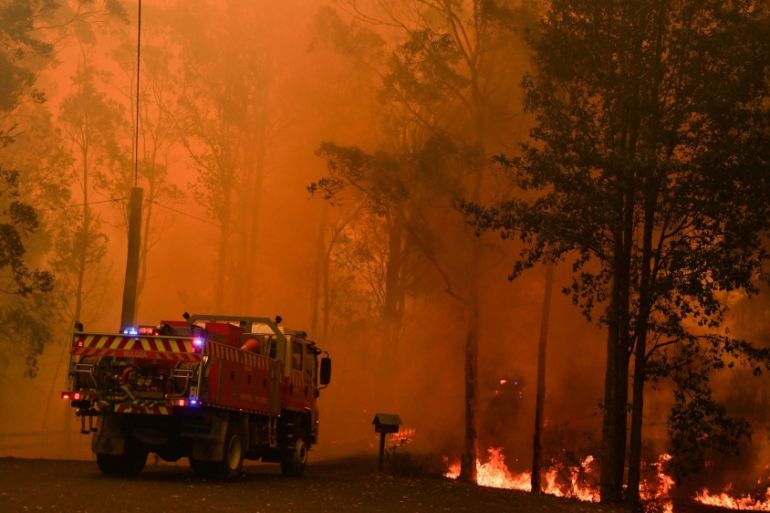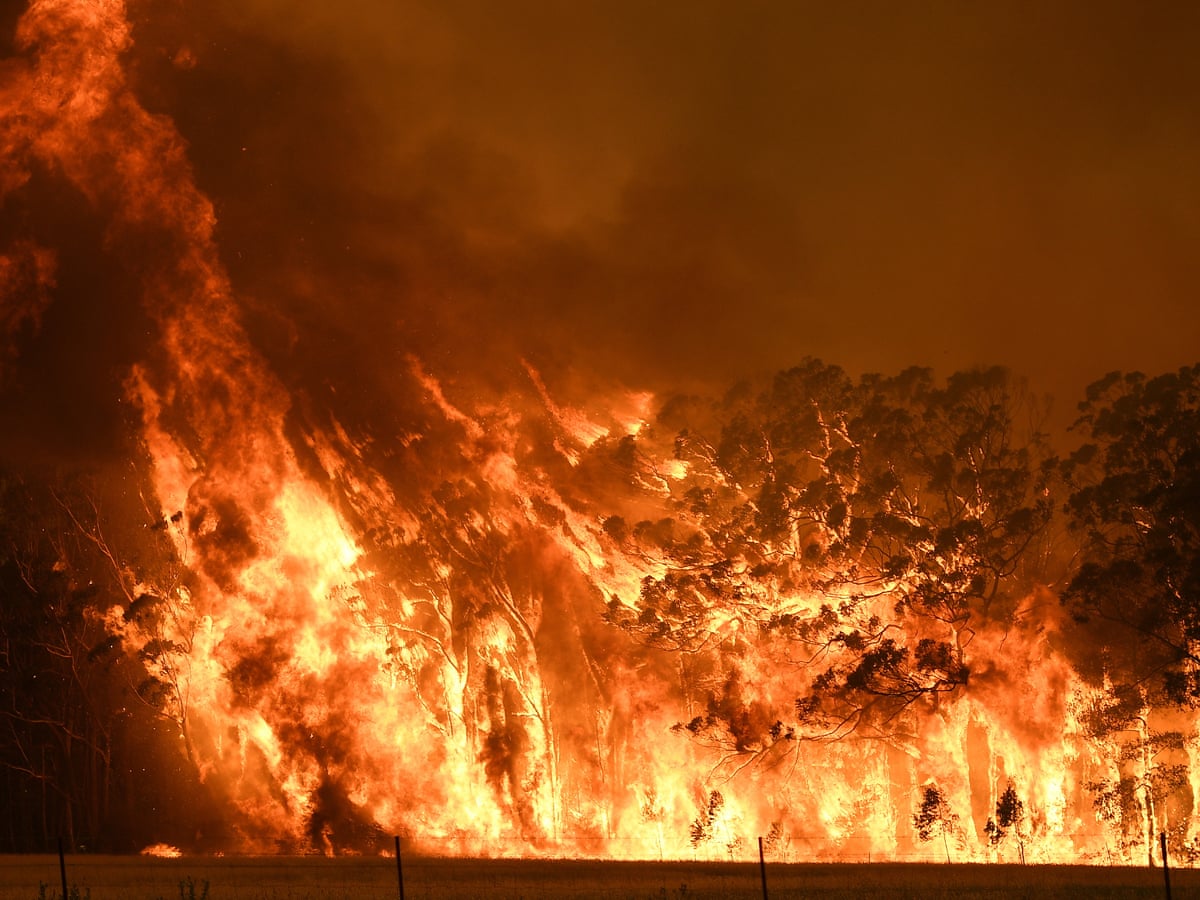Beyond Compliance: Enhancing Residential Or Commercial Property Security with an In-depth BAL Report
Beyond Compliance: Enhancing Residential Or Commercial Property Security with an In-depth BAL Report
Blog Article
The Value of Bushfire Administration in Fire Defense
In the realm of fire protection, the importance of reliable bushfire administration can not be underrated. As neighborhoods globally grapple with raising instances of wildfires, the positive method to avoid and minimizing these all-natural catastrophes with strategic bushfire management approaches has become an important aspect. Beyond the prompt threat to human life and residential or commercial property, the interplay between bushfire management and environmental conservation, neighborhood involvement, and environment change presents complicated obstacles that demand thorough remedies.
Value of Proactive Bushfire Prevention
Proactive bushfire prevention methods are vital in alleviating the ravaging impacts of wildfires on neighborhoods and ecosystems. By taking preventative procedures prior to a bushfire occurs, the threats connected with these all-natural catastrophes can be significantly lowered. One crucial aspect of aggressive bushfire avoidance is fuel monitoring. This entails minimizing the amount of flammable material, such as dead greenery and completely dry leaves, that can act as fuel for fires. Gas management strategies consist of suggested burns, where regulated fires are purposely lit to reduce the accumulation of combustible material.
Additionally, producing firebreaks - gotten rid of areas where vegetation is tactically removed to develop an obstacle to slow or quit the development of a bushfire - is an additional essential proactive action. By implementing these techniques, the spread of wildfires can be limited, protecting both human lives and the setting. In addition, enlightening the general public ablaze security techniques and advertising community recognition regarding the value of bushfire avoidance are essential parts of proactive techniques. Inevitably, proactive bushfire avoidance plays a significant duty in securing neighborhoods and ecosystems from the harmful effects of wildfires.
Role of Area Involvement in Fire Defense
Engaging the area in fire defense efforts is indispensable to enhancing the performance of proactive bushfire avoidance methods. Community interaction plays a vital role in promoting a collective understanding of the risks postured by bushfires and the relevance of readiness actions. By involving regional homeowners, authorities can disseminate crucial information on fire security techniques, discharge procedures, and very early caution systems, encouraging individuals to take proactive actions to protect their lives and homes.
Additionally, area involvement initiatives help build durability within communities, promoting a feeling of unity and shared responsibility in mitigating fire risks. With workshops, training sessions, and community occasions, homeowners can learn exactly how to develop defensible areas around their homes, decrease fire fuel lots, and identify possible risks. By fostering a culture of preparedness and collaboration, neighborhoods can reinforce their ability to react efficiently to bushfire emergencies, reducing the effect on homes and lives. Eventually, community engagement is a foundation of detailed fire security techniques, highlighting the importance of collective action in securing susceptible locations from the risk of bushfires.
Value of Wild Animals Conservation in Bushfire Management
Conservation of wildlife plays an essential role in reliable bushfire administration approaches, ensuring the security of varied communities and biodiversity in fire-prone areas. Wildlife conservation is important as it contributes to the overall strength of communities, assisting in their capability to withstand and recover from the influence of bushfires. By saving habitats and safeguarding various species, the natural equilibrium within these ecosystems is preserved, which is vital for their lasting health and sustainability.
Moreover, wild animals conservation also helps in lowering the risk and intensity of bushfires. Healthy and balanced environments with well-preserved wildlife populations can work as natural firebreaks, slowing down the spread of fires and restricting their harmful possibility (Bushfire Management Plan). Certain pet species, like burrowing pets or birds that spread seeds, play special roles in preventing fires or aiding in the post-fire regeneration of habitats
Including wild animals preservation into bushfire management strategies is not just necessary for protecting biodiversity however likewise for promoting the overall health and wellness and strength of communities in the face of boosting fire threats.
Advantages of Strategic Gas Reduction Programs
Strategically implementing gas reduction programs is crucial in mitigating the threat and effect of bushfires in fire-prone regions. These programs entail controlled burning, mechanical clearing up, and various other techniques to minimize the quantity of flammable vegetation available to fuel wildfires. By purposefully reducing fuel tons in essential locations, such as near residential areas or important facilities, the strength and spread of bushfires can be dramatically reduced.
Among the main advantages of gas reduction programs is the enhancement of general fire durability in a community. By developing tactical gas breaks and decreasing the connection of vegetation, these programs aid to disrupt the course of a bushfire, making it easier for firefighters to have and extinguish the blaze. In addition, fuel reduction programs can shield biodiversity by avoiding exceedingly extreme fires that can devastate habitats and endanger wild animals populations.
In addition, these programs can likewise safeguard human lives and residential or commercial property by decreasing the risk of disastrous fires that pose a considerable risk to neighborhoods. Eventually, calculated fuel reduction programs play a critical duty in positive bushfire management and promoting a much safer setting for both individuals and nature.
Influence of Environment Adjustment on Bushfire Threat

Higher temperature levels result in drier plant life, making it extra vulnerable to ignition. Minimized rainfall in particular regions lengthens drought conditions, additionally increasing the flammability of the landscape. Additionally, the altering environment has actually changed wind patterns and weather, causing more irregular fire habits and fast fire spread.
As the climate continues to try these out change, the regularity and strength of bushfires are anticipated to rise, necessitating a positive and flexible method to bushfire monitoring. Techniques have to develop to represent the changing threat landscape, integrating environment projections and considering long-term strength in fire management planning. Addressing the influence of climate change on bushfire danger is crucial in developing effective approaches to safeguard lives, residential property, and the setting.
Verdict
Finally, proactive bushfire prevention, community involvement, wildlife preservation, critical gas decrease programs, and consideration of climate adjustment are crucial parts in efficient fire defense. By applying these methods, we can much better manage bushfire risks and safeguard both human lives and the environment. BAL Assessment. It is crucial that stakeholders collaborate to company website focus on these actions to minimize the terrible effect of bushfires on ecosystems and neighborhoods

As the climate continues to transform, the regularity and intensity of bushfires are expected to rise, requiring a flexible and aggressive strategy to bushfire management.In conclusion, positive bushfire prevention, area involvement, wildlife preservation, strategic gas reduction programs, and consideration of environment adjustment are vital parts in efficient fire security.
Report this page